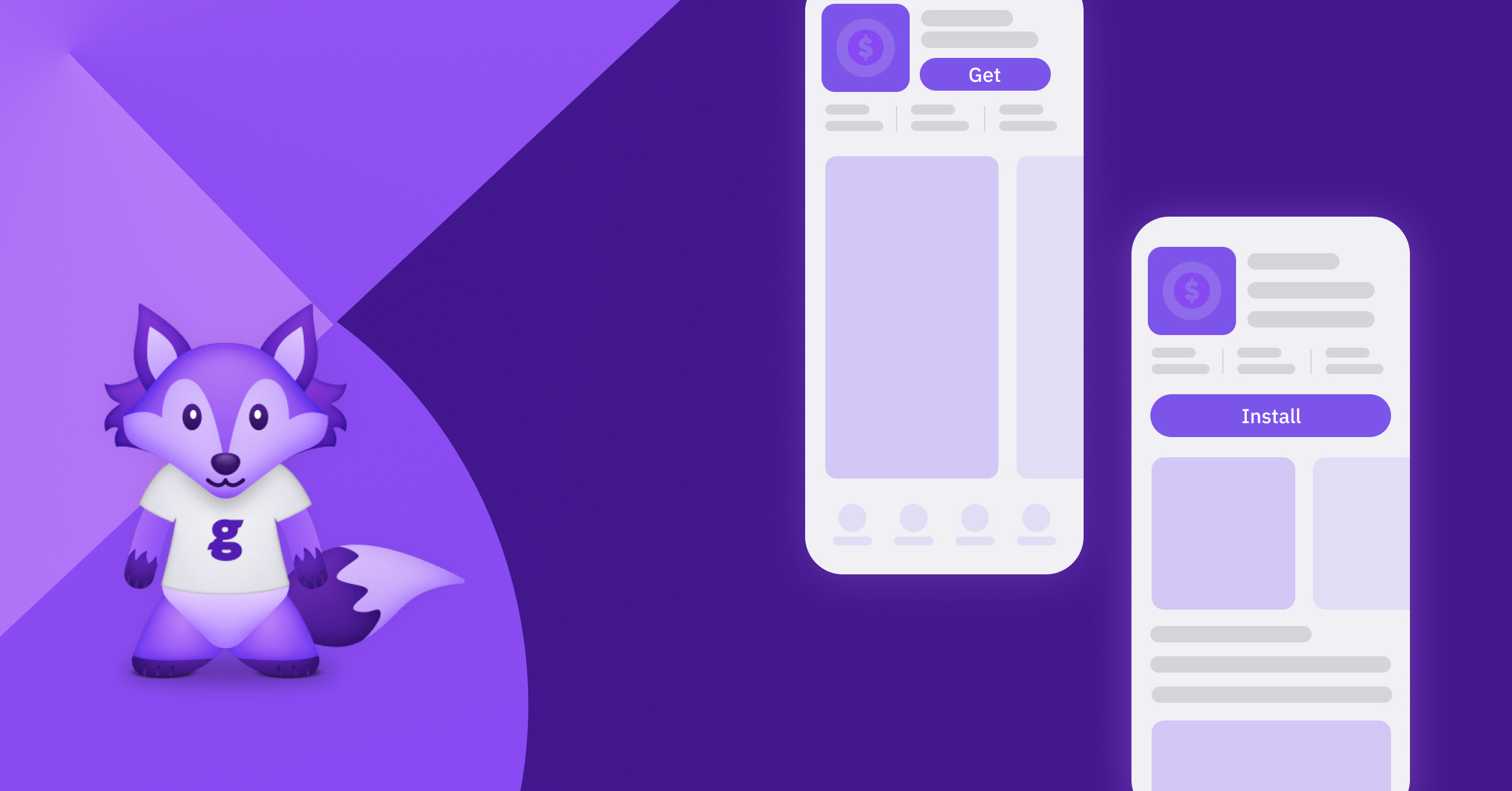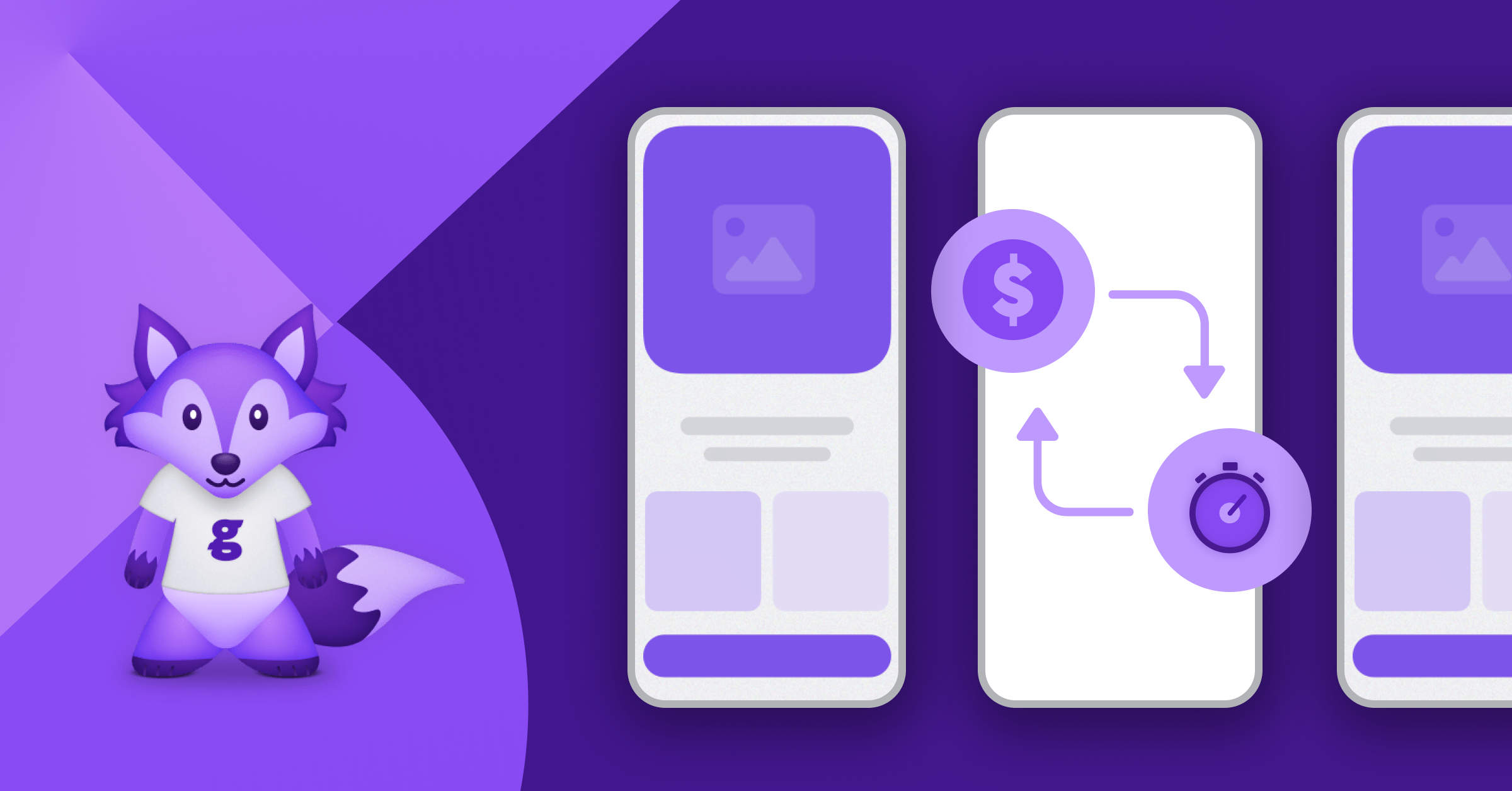Content
Top 5 In-App Monetization Strategies For 2024
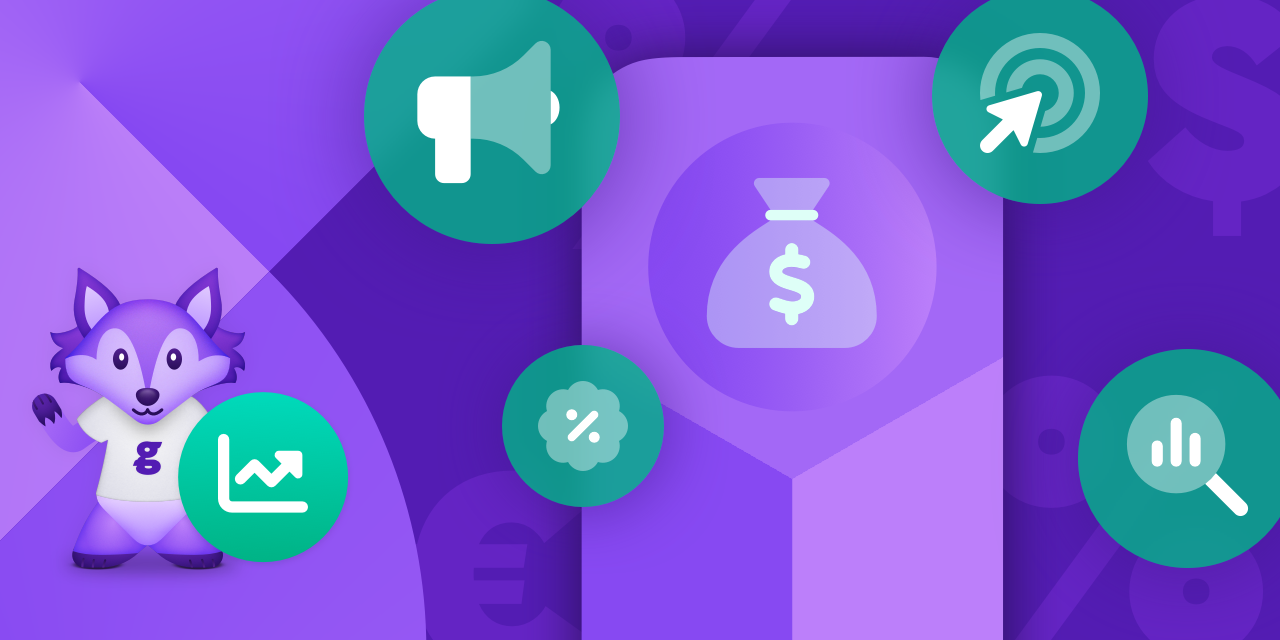
In this article we will unfold the various methods to monetize apps, allowing you to tap into significant capital resources and prosper. By the end of the article, you will have a full understanding of the numerous app monetization models available for app developers and how to make the most out of them.
The Different Monetization Models Available for Mobile Apps
What makes mobile app monetization significant? In today’s abundance of free apps, it is essential for developers to consider the monetization of their free apps with a well-thought-out plan on how to generate revenue.
It is crucial to be innovative as you should preserve a positive user experience while you’re trying to increase your earnings.
In App Advertising
The in app advertising monetizing strategy is now one of the most popular ways to boost your revenue. There are several types of advertisements you could choose between including display ads, video ads, native ads, and interstitial ads.
Nowadays there are platforms called Ad Networks like Google AdSense, AppLovin, PropellerAds, Mediavine, and many others, that allow the connection between advertisers and publishers. This means websites that wish to host them in line with many other websites can strategically place advertisements within other websites and applications in a practical way, letting them reach the targeted audience for the specific services and goods.
Display Ads
Display ads are best used to either establish or uphold brand recognition while gaining loyal customers. They are mostly known for their visually appealing elements, which include graphics, videos, logos, and images. They are designed in a way that attracts and engages with the audience.
Fortunately, display ads can now be found at very affordable prices, which makes them a great choice for app monetization as they are also great call-to-action.
Video Ads
Video in app advertising is a great way for app developers to engage with the audience and bring attention to their services. With this type of in-app monetization, you have the amazing opportunity to communicate with the users by offering a short captivating video including a story or message, that would allure them to check out what your business has to offer.
It is also a powerful tool if you want to improve SEO, as video ads are beloved by search engines like Google. As people enjoy watching videos online, video content would be ranked as more favorable by Google.

(Source: Pexels)
Native Ads
The native in app advertising app monetization model appears in three different types. The first ones are “in-feed” ads, which blend in the “environment” of the application, making you feel like these advertisements belong where they are positioned. A good example of it would be Instagram or Facebook.
The second type of Native ads are the ones that appear at the top of your search results, or at the side bars when you are looking for something in Google.
The third type of Native Ads are the ones that appear at the end of the articles, that you have just read, and they are called Content Ads. Typically this sort of in-app monetization is preferred by applications as they don’t annoy the users and readers.
There are some amazing Video Ad networks that you could use such as Facebook Audience Network, Publift, OpenX, Fyber, and others if you stop yourself on this monetization app model.
In-App Purchases

(Source: Pexels)
In-app Purchases are the ones that let the developers of the exact business or application sell specific features, goods, or services to their customers. It is very popular among gaming app developers.
The particular goods can either be expirable or non-consumable. For example, if you are using an application and have paid for a concrete feature it wouldn’t be consumable, but would rather stay in your account of the application indefinitely.
On the other side if you are into gaming apps, what the developer would do is make use of this monetization app model by featuring a user experience, that is tempting you and encouraging you to purchase consumable in-game items. This would then boost your progress.
Overall IAP is a great way to monetize apps as it is a stable way to boost your revenue and increase app downloads.
Subscriptions
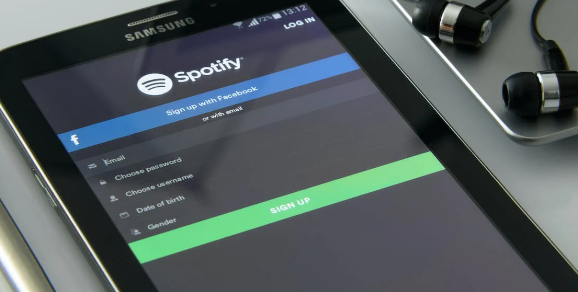
(Source: Pexels)
The subscription app monetization model is divided into non-renewable and auto-renewable types. The revenue with this business model comes from charges of a recurring fee for the users which could be annual, monthly, or weekly. By paying this fee the users are being granted access to the paid app concrete content or services.
The best thing about this app monetization model is that it is suitable for almost every application on the market and most of the app developers can make use of it.
Applications that provide constant top-quality content including streaming media, blog articles, services, or passes can make the most out of this model as with a well-thought-out project they can make continuous revenue.
Marketer-friendly app monetization platforms like Glassfy, Recurly, Paddle, and others would be an excellent cost-effective way to approach this app monetization model by optimizing it and cooperating with you to make your business grow and prosper.
In order to show how successful this app monetization strategy is we will give you only a handful of examples of some of the largest companies and businesses that made their way through this model. This would include Netflix, Spotify, Microsoft Office 365, and even YouTube which of course relies on a mixed model of ways to monetize their brands.
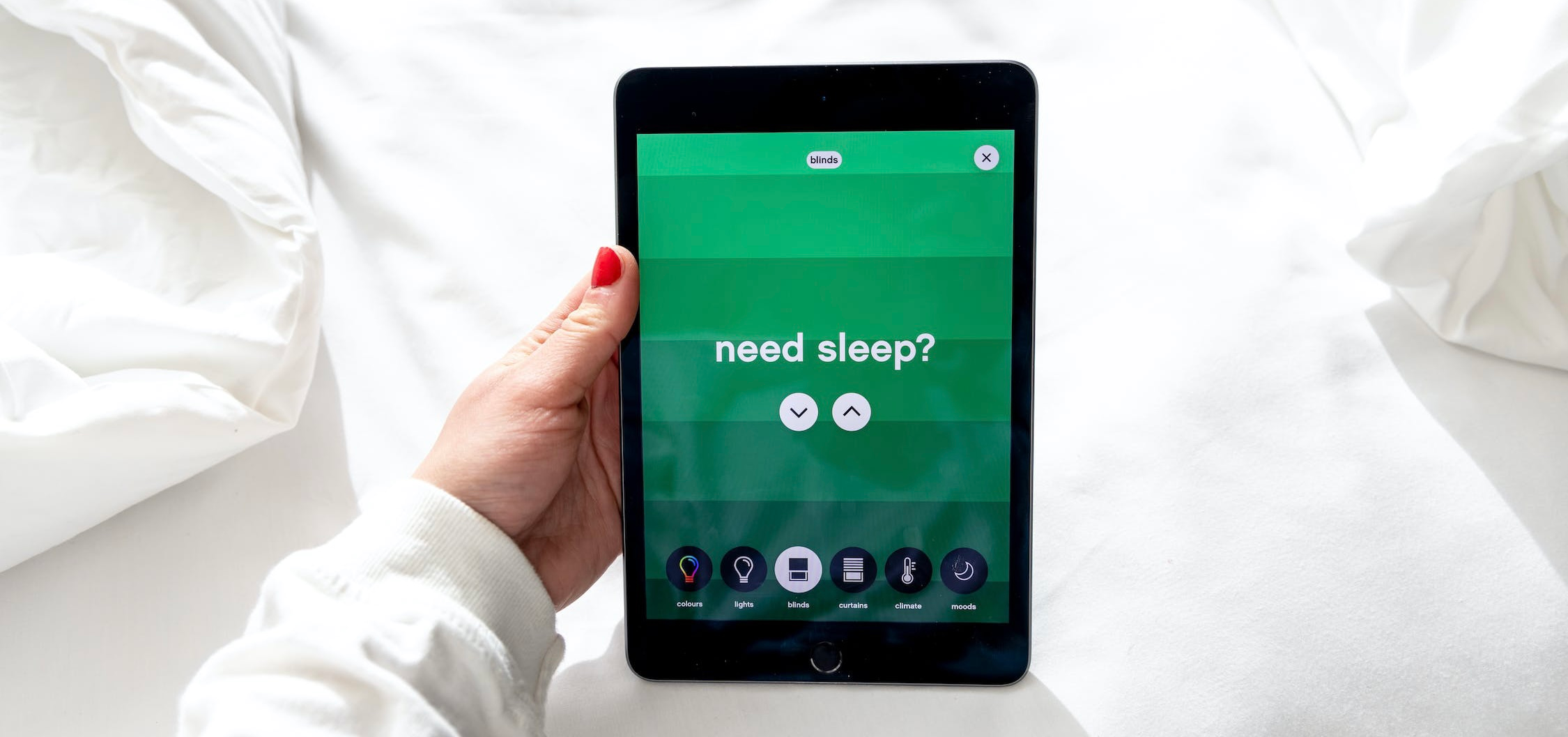
(Source: Pexels)
Freemium
The Freemium app monetization method works by offering the users the choice of having the basic version of your app for free while providing more functions and features through a premium version if they want to purchase it. The premium version is commonly an ad-free version or paid subscription.
The goal of these free mobile apps is to attract as many users with the free version, trying to convert a percentage of them into paying customers and gain app revenue.
If you make some basic features paid, this would instantly put off the potential customers of the paid version. What would they expect from the application if even the most basic things are paid?
On the other side, you have to come up with some exclusive extras in the paid version of your application to make sure the users are ready to pay for them and value them.
Most of the users that are being turned into paying customers are often part of a specific audience, that relies on the kind of paid app and services, that you have to offer.
Sponsorship and Partnership
The way sponsorship and partnership app monetization models work is often by a platform using various forms of promotional content intended for a specific audience, enabling advertisers to connect with the users.
These types of applications are offered for free on the market. The businesses and sponsors increase their brand’s public and in return pay to the applications increasing their revenue.
However, it is crucial to be careful how many advertisements you are putting up with as excessive ads can become annoying and overwhelming for the users, which would have a negative effect on the usage of the application.
Affiliate Marketing
The affiliate marketing app monetization method gains revenue by promoting other products or services on your application and earning commission whenever a user purchases through the app’s referral links.
Collaborating with different businesses and platforms would be very important to grow your application audience and earnings thereafter.
We would advise this type of app monetization model to be used when you are engaging with a targeted audience that is interested in very specific niches and would be genuinely intrigued by the products, that you are promoting.
Implementing the Various Mobile App Monetization Models
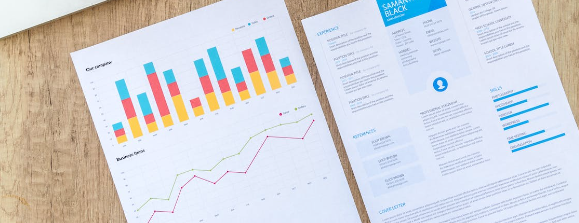
(Source: Pexels)
In App Advertising
Executing in app advertising requires a series of actions that can contribute to revenue growth. Here are some essential factors to bear in mind when you decide on your app monetization model.
Hook Up an Ad Mediation Platforms
These nifty platforms let you team up with multiple ad networks at once, so you can make sure you have ads coming in left and right. They do the heavy lifting, picking out the best-performing ads from various networks, all based on things like eCPM (effective cost per mile or in other words ‘how much money you make per thousand views’) and how often they actually fill the ad space.
You have a bunch of in app advertising to choose from - app banner ads, full-screen ads, pop-up ads, ads that blend in with your content, and even those cool videos that reward users. Each one has its pros and cons, so you would need to make sure you’re going for the ones that match your app’s vibe and the circle of people you are trying to reach.
Place Ads Smartly
Where you position those ads can make a big difference in how much money you make. You should try out different places in your app to see what keeps your users happy and engaged while still bringing in earnings. Just steer clear of annoying ads that might drive away the customers.
Offering a free app can help you out with increasing the number of users too as many of the folks would rather give it a try to a free app instead of the paid apps in the app stores. It has been proven that free app can attract way more traffic than paid apps.
Show Ads That Fit the User Base
It’s all about giving your users ads that match their interests. Make use of the ad networks’ targeting features, like picking ads based on where the consumers live or what they are into. That way, you will keep them engaged and intrigued leading them into clicking.
Keep an Eye on How Your Ads Are Doing
Don’t forget to check in on your in-app ads now and then. Look at stuff like how often people click, how many actually buy something, and how much cash it’s bringing in. That way, you’ll know which ad tricks are working best for your app.
Keep in mind, when it comes to in-app ads, it’s all about striking a balance between making money and keeping your users happy. If you stick to these steps and keep improving your strategy, you’ll be able to increase your earnings through in-app monetization.
Maximizing Revenue with In App Purchases
As this is one of the most favorable app monetization methods within free apps you cannot go wrong with choosing this monetization method if you are aware of the strategies you would have to use.
Goods and Currencies
Consumable In-App purchases are the ones that become used up once the user purchases the item and consumes it. This might include extra lives, power-ups, virtual currencies, and others.
The consumable in-app purchases are most common for games as you can buy gems, coins, and so on to enhance the gameplay. The users usually need to supply themselves repeatedly to keep up with the experience.
The Non-consumable Purchases are the ones that customers only pay for once while receiving indefinite benefits. This includes features such as removing the advertisement from the application, unlocking new levels, or buying premium extras and features, such as photo editing application effects, etc. These are all things, that still improve the overall application experience while staying indefinitely.
The other thing you may purchase is a Mystery Box. They usually include random rewards with higher value for a lower price, which again encourages the users to buy them, even though they might not know exactly what they would get out of them.
Pricing Strategies
The best strategy to work it out with In-App purchases would probably forever be to offer the application for free, which would attract more users you could later turn into paying customers with compelling experiences.
Usually, the best place to place an In-App purchase store is in a specialized section within the application, where the users can browse and purchase the needed items and features. A great way to get the best out of this is to also include bulk purchase options, as many users are more likely to pay a bit more for the promo price of the multiple items they will receive.
With this said we should also let you know that limited-time offers and promotions also have a big impact on the increase of in app purchases.
Another way to make use of the in app purchases is to add push notifications, that would remind the customers of the ongoing promotions and sales you have, or pop-up banners within the application. This can also be used whenever a user completes a task, or a level, or is not able to do so, as the items he can purchase would help to reach his goals.
A/B Testing
In order to create tailored purchases for different groups of people you would need to divide your user base by different characteristics such as their spending habits, gender, or demographics. The data that you can collect for each user can help you target the users that are more relevant to in-app purchases.
You can also analyze which are the features, that users engage with the most. If the application is a game then you can analyze which levels the consumers struggle with the most or when they decide to give up.
Personalization of the in-app purchases and mobile app monetization strategies can also extend to pricing strategies. Developers have the flexibility to explore app monetization methods and experiment with various pricing tiers or provide tailored discounts to specific circles of users.
By using multiple monetization methods and tailoring the pricing options to individual users, developers can increase the perceived value of the in-app purchases and encourage more conversions.
Subscription Models and Revenue Streams
The subscription model is probably the best form of mobile app monetization that can significantly boost revenue for app developers.
Tiered Subscription Plans
To give your subscription plans a makeover, you can try tiered pricing. Instead of just having one subscription deal, mix it up with different levels of access or extra perks at different prices. This way, users are allowed to choose a plan that fits their budget and their needs, making the subscription more tempting.
As we already unveiled in one of our previous articles another great approach is to offer a freemium model to the users, because you will be again giving them the choice to decide between the free basic version and the premium version with additional content and features.
It would also be really important for you to regularly keep an eye on the feedback of the users and keep their preferences in mind as you optimize the subscription plans so that they remain appealing and keep attracting new customers.

(source: GetConnected / Spotify tiers)
Exclusive Content and Features
Now this one is especially good for new apps, but every app developer should keep up with it to boost their mobile app monetization. Offering a subscription plan for a free app that gives the users access to exclusive content, ad-free browsing, premium features, and other personalizations would attract many more customers who will be willing to pay for a better and more tailored experience within the app. You would also need to carefully consider which features and content to set as a premium to justify the subscription fee.
Retaining Subscribers
A great way to start is by offering free trials to attract more potential customers. The best part about the subscription mobile app monetization strategies is that most of the users are loyal and stay engaged if you can offer the same back to them.
It is crucial as well to stay transparent about the pricing, the features, and content that the users would receive as this would help to build better trust between the two sides.
If you have decided that this very flexible In-App monetization model is the one you will be going after, we would kindly remind you about the best way to approach it.
As we have already mentioned above there are several amazing friendly platforms like Glassfy, G2, Stripe, RevenueCat, and others, that can help you out with the whole hassle, as they already know what exactly to do, so you can boost your revenue as fast as possible with engaged clients on the side.
An app monetization platform enables you to build, learn, and grow your in-app subscriptions, providing you with real-time unified data and many out-of-the-box reports churn rates allowing you to act fast and effectively to stay at the top list within the Apple app store and Google play store continuing to generate revenue.
How to Balance Between Free and Premium Content
To start well with the Freemium popular app monetization strategy you would need to balance between the free features and premium features very carefully to increase your app downloads.
A free compelling experience would be a must to gain more users, but you would need to only give them a hint of what they could be receiving as customers of your premium paid app version. Regular upgrades and well-handled customer feedback are again playing a crucial role in making sure you are succeeding.
Integrating Content Into Sponsorship and Partnership Models

Source: Pexels
In case you already imagined developing your app with this in-app monetization model you should be aware it includes a lot of work with different businesses and brands. Let’s take a look at what is essential to get your earnings going.
Identifying Potential Sponsors
As identifying the potential sponsors for your application is crucial you would need to look around. Analyzing your targeted audience and identifying which brands and businesses are relevant to your customers’ preferences can give you a significantly good start.
Another great way to identify potential sponsors is by researching your competitors and their successful partnerships.
A further valuable tool would be to use social media such as Instagram or X (formerly known as Twitter) to follow brands that are relevant to your application and try to engage with them directly or indirectly by interacting with their content.
A great addition to that is monitoring and following conversations in posts, which are again related to what you have to offer within your free apps.
Integrating Sponsored Content
To monetize your mobile app effectively you would need to select only relevant content, and content that you saw as preferred by the data you collected from your users. The key to succeeding is to maintain transparency and have your users’ experience as the number one priority.
Optimizing Affiliate Marketing in Mobile Apps

(Source : Pexels)
Partnering With Relevant Affiliates
Collaborating with mobile app affiliates can significantly boost in-app revenue. When choosing affiliates, prioritize relevance to your app and its target audience. Look for affiliates in similar niches or industries, as they’re more likely to have an audience interested in your app.
To establish these partnerships, use affiliate networks or approach potential affiliates directly. Once partnerships are in place, provide affiliates with the tools they need for effective promotion, like unique referral links, promotional materials, or exclusive discounts.
Tracking and Analytics
Regularly monitor and analyze affiliate performance, tracking metrics like clicks, conversions, and revenue using analytics tools of the mobile app. This data highlights top-performing affiliates and areas for improvement.
Optimizing Affiliate Campaigns
Continuously optimize partnerships to ensure they consistently contribute to revenue growth and support your in-app monetization strategy.
How to Choose the Right Monetization Strategy
While choosing the right monetization strategy might seem like a really difficult decision to make, once you have read about all the types that exist, and the ways they work it should be easy to consider which one would fit your application best. There are only a couple of things to think through when doing so.
User Retention and Monetization

(Source: Pexels)
User retention and monetization are closely connected with mobile apps. Retention would mean that you keep the users engaged and make them come back, while in-app monetization means you generate revenue out of the application. Of course, when users stay engaged and stick around it is easier to monetize your application as they are more likely to spend money within the app.
Targeting and Understanding Your Audience
You should always target an audience that is going to be truly interested in what your application has to offer, doesn’t matter if it’s going to be a gaming app, some sort of streaming content, or other services.
Understanding your audience means you consider which type of app monetization strategy would work the best with these users, inviting them to spend some amount of income on your assets. For example, productivity app users would most likely favor subscription-based monetization app models.
Type of App Content
Probably the most important thing for your business to get going is to decide on the type of content that you are going to include in your own app store.
Before doing so, you cannot choose the mobile app monetization models you are going after, or decide which kind of audience you are going after. Whichever type of content or services you stop yourself onto, it is crucial to deliver exceptional and exclusive content, or services to prosper, as there already is a lot of competition on the market.
Competitive Analysis
You would be required to research your competitors very well in order to succeed between them. You should think well of a project with numerous strategies, maybe involving even promotions at times, or keeping up with a unique value of the products to stand out against the others.
You should be aware that this environment is fast-paced and very competitive, so considering the investment, and the use of tools and platforms might be a game changer in the path to boosting and optimizing your application.
Adherence to Monetisation Best Practices

(Source: Pexels)
Providing a variety of different app monetization models like in-app purchases, display ads or subscriptions is more likely to enable you to provide more users with their different preferences leaving them satisfied.
As we already said you should mind where you are placing advertisements and control how frequently they show up to avoid overwhelmed or annoyed customers.
Build trust with your clients by clearly explaining the app monetization models you use and always leaving room for clients to opt out of advertisements. Make sure your ads are loading quickly and regularly test and optimize them to avoid any frustration.
Closely monitor any kind of feedback, user reviews, and ratings as this is the first thing many people would see when deciding if they are going to try your application. When it is needed refine your strategies to please the customers.
Analyzing and Optimizing Monetization Methods

(Source: Pexels)
Analyzing and Optimizing in-app monetization strategies means systematically improving how an app is making money. This involves assessing current monetization methods, finding areas to enhance, and making changes for better revenue outcomes. By doing this, app developers increase their revenue potential.
Analyze the behavior of the users and try to understand how they interact with the application. Highlight which features are most valued and which payment options are they favorable to.
Test different approaches and compare the users’ satisfaction, retention, and of course the revenue of each model. You will always need to improve and optimize things around your mobile app to maintain a positive user experience, which is why tools and platforms are worth investing
Conclusion
The in-app monetization landscape is growing and innovating drastically. Whilst mobile apps are a big part of the digital space, businesses and all kinds of brands constantly seek ways to make money out of this. Providing a pleasant and seamless experience to the user, while gaining revenue the in-app monetization strategies became a powerful solution.
Subscription-based models are a great example as they offer premium content for recurring fees, ensuring the satisfaction of the customers making them loyal, and generating revenue for the mobile app. In-app purchases are also gaining popularity offering extras, especially with the growing number of virtual game lovers these days.
App owners are now allowed to tap into new earnings streams with long-term success as they stay ahead in the app monetization strategies by embracing personalized ads, subscriptions, in-app purchases, and emerging tech.
We hope you found this article helpful and got a comprehensive understanding of the numerous mobile app monetization strategies, and how to adapt your monetization approach to stay ahead with the ever-changing mobile app industry.
Read More
